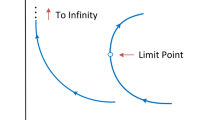Abstract
Asteroid mining is one of the most promising private space ventures of the near future. Near-Earth Asteroids (NEAs), i.e. those with perihelion at less than 1.3 AU from the Sun, are among the best candidates for such venture. In preparation of mining expeditions, it is likely that prospector missions will be carried out well in advance so to assess the accessibility, potential for revenues and possible critical issues of target asteroids. This work is concerned with the problem of the feasibility of a single spacecraft prospector mission capable of visiting as many NEAs as possible in one shot, focusing on Apollo-class asteroids only. The search of possible trajectories is done assuming a chemically propelled spacecraft with realistic specific impulse and propellant mass ratio, so to allow for a credible mission design with a reasonable, cost-effective total duration. In order to restrict the number of possible trajectories, only those that lie in the plane of the ecliptic are examined; such trajectories can be reached from the Earth without expensive plane change maneuvers. The search for a maximum number of encounters is thus restricted to those occurring where the asteroid orbit crosses the ecliptic. A deterministic building blocks approach is adopted, dividing the optimization problem in two parts: a local optimization for possible target determination; and a global optimization for the choice of the overall trajectory. It is found that the combined approach leads to the identification of viable trajectories, able to perform a number of encounters that depends on the launch epoch; as an example, in one test case two different sets of 21 NEA’s each were identified that could be reached with a single launch, with a slightly different propellant expenditure. It is concluded that the method is well suited to perform feasibility studies of NEA missions with good accuracy and moderate computational cost.







Similar content being viewed by others
References
Anthony, N., Reza Emami, M.: Asteroid engineering: the state-of-the-art of Near-Earth Asteroids science and technology. Prog. Aerosp. Sci. 100, 1–17 (2018)
Di Carlo, M., Vasile, M.: Low-thrust tour of the main belt asteroids. Adv. Space Res. 62, 2026–2045 (2017)
Izzo D., Hennes D., Simões L.F., Märtens M.: Designing complex interplanetary trajectories for the global trajectory optimization competitions. In: Fasano G., Pintér J. (eds) Space engineering. Springer optimization and its applications, vol. 114. Springer, Cham (2016). https://doi.org/10.1007/978-3-319-41508-6_6
Peloni, A., Dachwald, B., Ceriotti, M.: Multiple near-earth asteroid rendezvous mission: solar-sailing options. Adv. Space Res. 62, 2084–2098 (2017). https://doi.org/10.1016/j.asr.2017.10.017
Fritz, S., Turkoglu, K.: Optimal trajectory determination and mission design for asteroid/deep space exploration via multi-body gravity assist maneuvers. In: 2016 IEEE aerospace conference, Big Sky, MT, 2016, pp. 1–9. https://doi.org/10.1109/AERO.2016.7500537
Park, R.S., Chamberlin, A.: Small-body database search engine, NASA Jet Propulsion Laboratory, https://ssd.jpl.nasa.gov/sbdb_query.cgi. Accessed Sept 2018
Williams, D.R.: Earth fact sheet, NASA Goddard Space Flight Center, https://nssdc.gsfc.nasa.gov/planetary/factsheet/earthfact.html. Accessed Sept 2018
Addis, B., Cassioli, A., Locatelli, M., Schoen, F.: Global optimization for the design of space trajectories. Comput. Optim. Appl. 48, 635–652 (2011)
Di Carlo, M., Romero Martin, J.M., Vasile, M.: Automatic trajectory planning for low-thrust active removal mission in low-earth orbit. Adv. Space Res. 59, 1234–1258 (2016)
Barbee, B.W., Esposito, T., Pinon, E., Hur-Diaz, S., Mink, R.G., Adamo, D.R.: A comprehensive ongoing survey of the Near-Earth Asteroid population for human mission accessibility, presentation at AIAA guidance, navigation and control conference of Toronto (2010)
Warner, B.D., Harris, A.W., Prave, P.: The asteroid lightcurve database. Icarus 202, 134–146 (2009)
Author information
Authors and Affiliations
Corresponding author
Ethics declarations
Conflict of Interest
On behalf of all authors, the corresponding author states that there is no conflict of interest.
Additional information
Publisher's Note
Springer Nature remains neutral with regard to jurisdictional claims in published maps and institutional affiliations.
Rights and permissions
About this article
Cite this article
Cataldi, G., Marcuccio, S. A 2-D Trajectory Design Algorithm for Multiple Asteroid Flyby Missions. Aerotec. Missili Spaz. 99, 287–295 (2020). https://doi.org/10.1007/s42496-020-00067-x
Received:
Revised:
Accepted:
Published:
Issue Date:
DOI: https://doi.org/10.1007/s42496-020-00067-x




